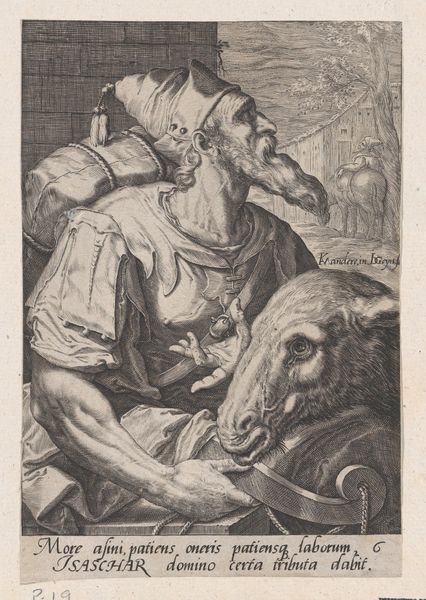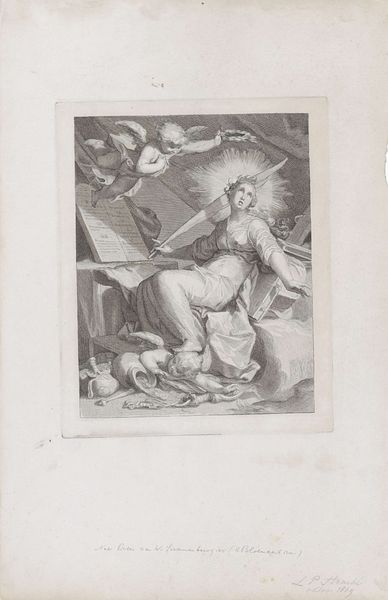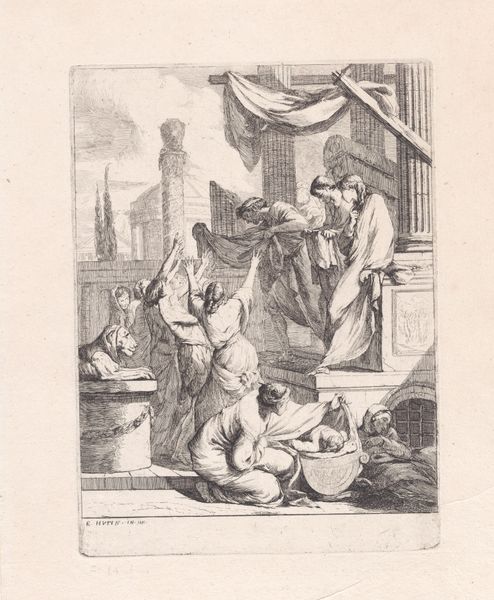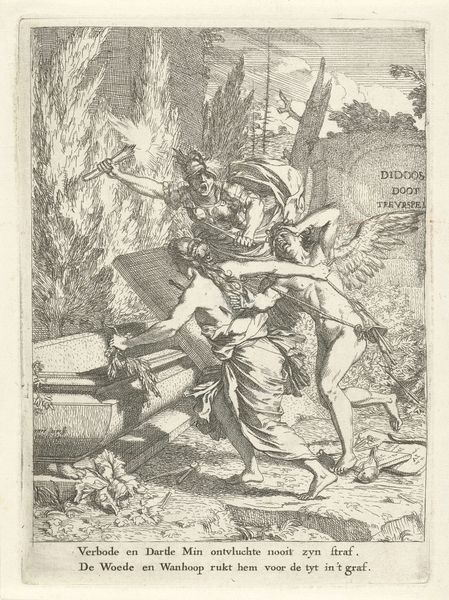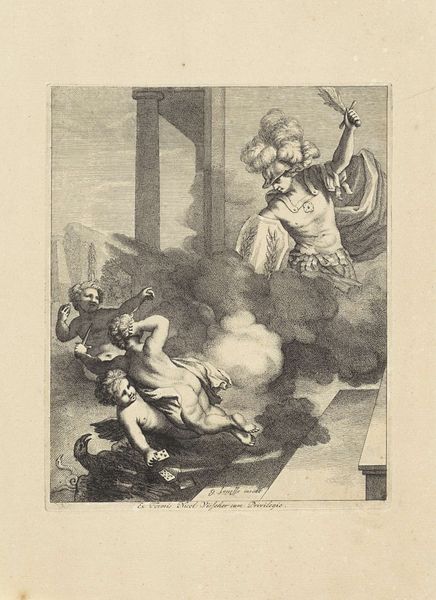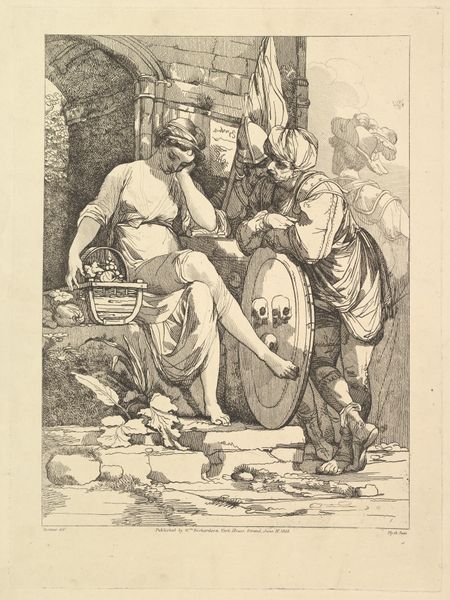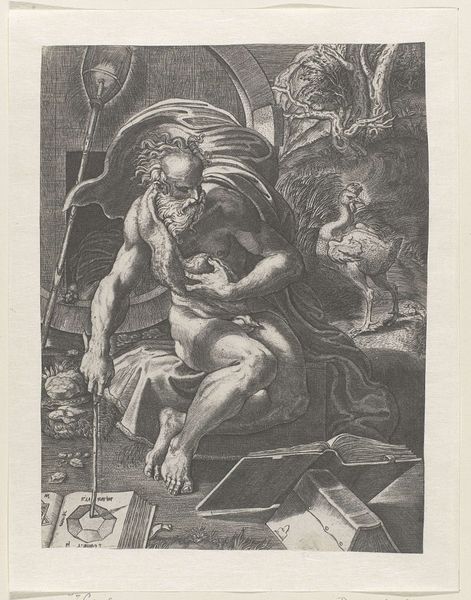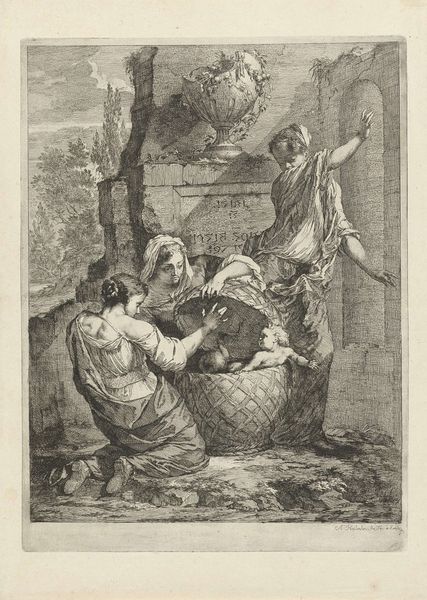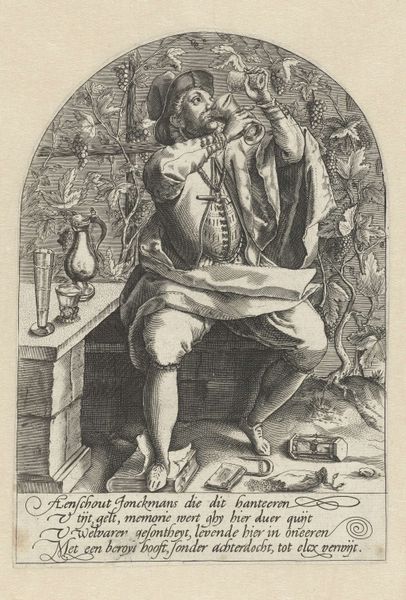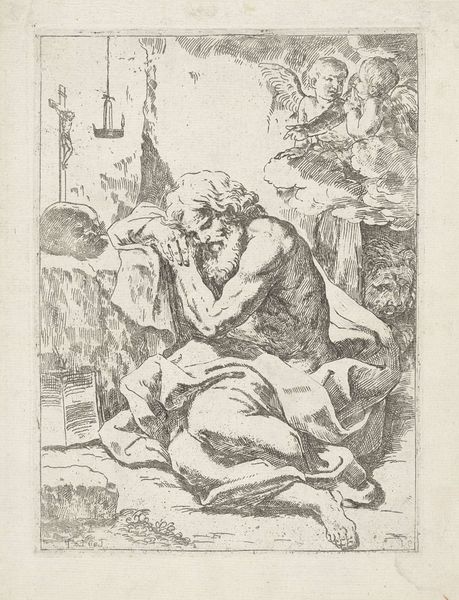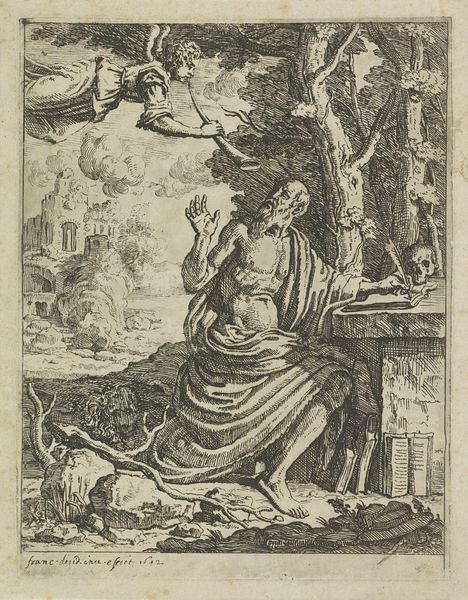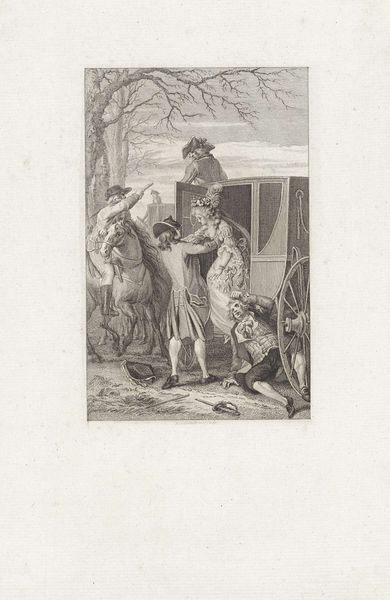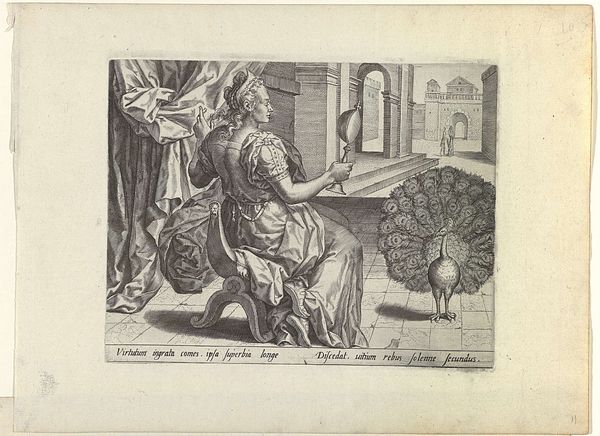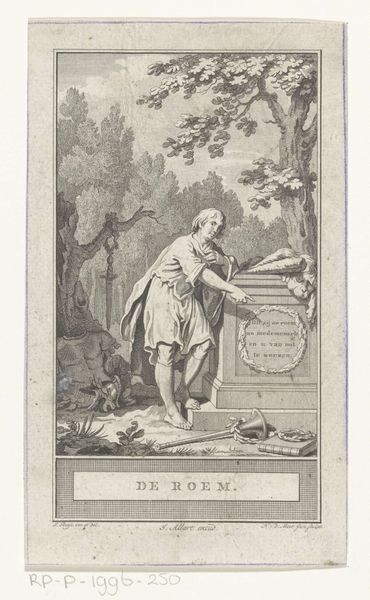
engraving
#
baroque
#
history-painting
#
engraving
Dimensions: height 278 mm, width 184 mm
Copyright: Rijks Museum: Open Domain
This print of Saint John the Baptist at a well was made by Pieter de Jode the Younger, sometime in the 17th century. Its visual impact derives from the artist’s mastery of engraving, an exacting intaglio process done on a copper plate. Think of the labor involved! De Jode would have used a tool called a burin to manually cut thousands of tiny lines into the metal. The depth and density of these marks created the image, with its subtle gradations of light and shadow. To make an impression, ink would be forced into these lines, the plate surface wiped clean, and then pressed onto paper. Engraving was essential for disseminating images in early modern Europe, and prints like this one were relatively affordable, bringing art into many homes. This beautiful example reminds us that the humblest materials, when expertly handled, can convey profound spiritual meaning. It also demonstrates the democratization of devotional images, once exclusively for the wealthy and powerful.
Comments
No comments
Be the first to comment and join the conversation on the ultimate creative platform.
